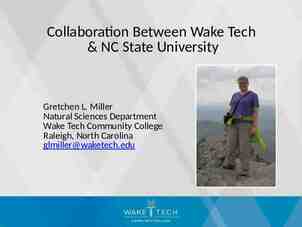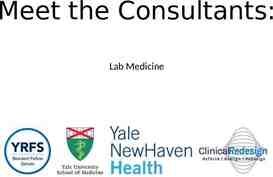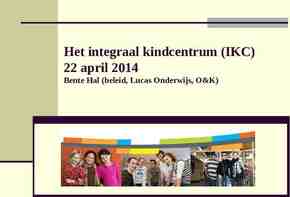AASHTO CTSO Highway Automation Task Force Update Scott Marler, Iowa
17 Slides1.42 MB
AASHTO CTSO Highway Automation Task Force Update Scott Marler, Iowa DOT Joey Sagal, Maryland DOT February 28, 2020
Presentation Outline The Need for a Vision and Roadmap December 2019 Workshop Outcomes Ties with other Activities Recommended Next Steps
Introduction
The Need for a National Vision and Roadmap Cooperative Automation has potential for significant safety improvements Public agencies have questions about automation readiness Private industry wants improved readiness Consistency is key to readiness “Unity is Strength” – Promoting equity among states for emerging technogies
What We Heard Problems We Are Trying to Solve Economic Competitiveness 10 trillion in goods is shipped by truck each year (70% of all domestic freight)1 Congestion costs the economy 166 billion each year2 277 billion economic impact of Safety Mobility and Equity About 40,000 lives were lost in 2018 on our nation’s roadways 4 About 4.5 million people were seriously injured in crashes in 2018 4 8.8 billion hours are spent in delays (54 hours per year per commuter) Efficiency 2 Congestion costs 166 billion annually2 20 % of households at or below the federal poverty line lack access to a car5 3.3 billion gallons of fuel is wasted per year 2 Health and Environment Greenhous e gases Public health impacts Vulnerable road user/bike and ped crashes
Workshop Goals 1 Develop a clear national strategic vision and approach for highway automation; 2 Clearly outline how government, research and private industry work together; 3 Develop a highlevel strategic approach for the national deployment of automation.
Workshop Input from Members The Concept of a National Strategy is Broader Than Originally Envisioned More Stakeholders were identified than Originally Planned However, Infrastructure Owner Operators Have Specific Needs from a Strategy Feedback on the Draft Workshop Summary Report Confirmed These Points
We Listened to the Feedback – 200 Comments (Examples paraphrased) Title itself: “AASHTO” question come up about will there be ITE national strategy? More clarity on Interest is to get to a National Strategy and get everyone involved readiness principles Is it really a National Strategy? Is UK model a NS? Make proclamation at the very top and then say the workshop input about needing to create a NS Somewhere we need to qualify at what level we are doing this as a NS? This doc helps connect with the entire National vision Title: A Concept for a National Strategy for Transportation A Concept for a National Vision and Roadmap for Transportation Automation If I’m running WashDOT today, I post this on the website and when I do different activities, I see what AV readiness areas I can support For each Readiness category: outcomes could be corridor based info of readiness available in national document: -ADS developer could reach out to find out what infrastructure is ready As leaders, we should Next steps: very tactical bullets: make them more actionwhat oriented be defining Doc will serve as initial step for CTSO in collaboration with ITE and ITSA that will Roadway Readiness serve AASHTO needs and other considerations with ITE and ITSA means Doc will help with scope development Doc helps with alignment with Define what each Doc helps merge with conops sector is working on, Mechanism needs to be developed to deliver this things When we get into fundamental principles say: this will connect 5.3: what are other parts that help connect it all together? How dohow we make the industry all fit and they UK called it a vision and roadmap connection? into the larger national Title itself: “AASHTO” question come up about will there be ITE national strategy? AASHTO is convening these conversations, no one owns vision Vision, business case and goals: 8
Workshop Outcomes Prioritized 3 Points of Agreement Categories Categories Priorit y#1 Priorit y #2 Priorit y #3 Total Votes Readiness 3 4 5 12 Stakeholder Engagement 5 2 3 10 Deployment Phasing 2 3 2 7 We need a plan/national strategy 5 0 1 6 Vision/WIG/Business Case 1 2 2 5 Evolving/iterative process 1 2 2 5 Workforce 0 1 3 4 Research 0 0 2 2 Relative Priority On Day 2 of the workshop, participants were asked to list three things they believed to be points of agreement amongst the group and to rank them in order of priority. Yellow cells show the highest amount of votes for a category within each level of priority. The “Relative Priority” column shows their weighted priority. This is not a scientific survey, but a snapshot in time of where participants believed they had achieved agreement.
Workshop Key Takeaways Vision Plan and Readiness Strategy Remain Highest Priority Partner and Stakeholder Engagement is Critical to this Effort. Underserved & Vulnerable User Groups and Equity Must be Reflected
A National Strategy for Transportation Automation Four key elements: Vision / Mission / Values Business Case Readiness National Deployment/Implementation
The Evolving Vision Multi-modal transportation, not just “highways” Global economic competitiveness as a key benefit Advancing zero deaths as an aspirational goal Advancing zero congestion as an aspirational goal Ground transportation in a way that is compatible with future technology transformations.
What We Heard Business Case GLOBAL ECONOMIC COMPETITIVENESS AND GROWTH Improved supply chain efficiency Reduced costs of traffic congestion Reduced cost of crashes Improved mobility for underserved groups NATIONAL SECURITY & EMERGENCY MANAGEMENT Improved military logistics mobility Improved mass evacuations Improved emergency management Improved system resiliency PUBLIC HEALTH & SAFETY CORROLLARY TECHNOLOGICAL ADVANCEMENT Reduced fatal and serious injury crashes Improved air quality Improved safety for vulnerable users Improved system sustainability Improved first Expanded 5G and telecommunicatio ns Expanded capabilities of artificial intelligence Improved scale and efficiency of electrification Expanded IoT &
What We Heard THE WHERE National Network Highway Systems Urban/ Metro Mobility Services National Network MultiModal Infrastruct ure Systems Concurrent Strategic Deployment
Ties With Other Activities - Examples National Initiatives – FHWA RFI on Integration of AVs into the Highway Transportation System – 2018 – FHWA National Dialogue on Highway Automation – 2018 – FHWA Impacts of AVs on Highway Infrastructure – Active – FHWA Roadway Automation Concept of Operations – Active – IOOs Guiding Principles for Connected Infrastructure Supporting CAT - Approved National Research: – Connected Road Classification System Development – Road Markings for Machine Vision Research – Dedicating Lanes for Priority or Exclusive Use by CVs and AVs – NCHRP 20-102 & 24 Research Projects State and Local Efforts: – Delaware DOT’s Integration of Artificial Intelligence in Transportation Management Program 15
Next Steps 1. Establish Closer Ties with USDOT Efforts that are Defining: “What” Automation Readiness is; and “How” AVs will Operate in mixed fleets 2. Establish Closer Ties with the Parallel Efforts: More formalized relationship with the CAT Coalition Cooperation with the IOO Guiding Principles (AASHTO, ITE, ITS America) 3. Continued Stakeholder Engagement Next Step -- Future Engagement Workshop – Defining the elements that were re-framed in Des Moines
Questions ?






















